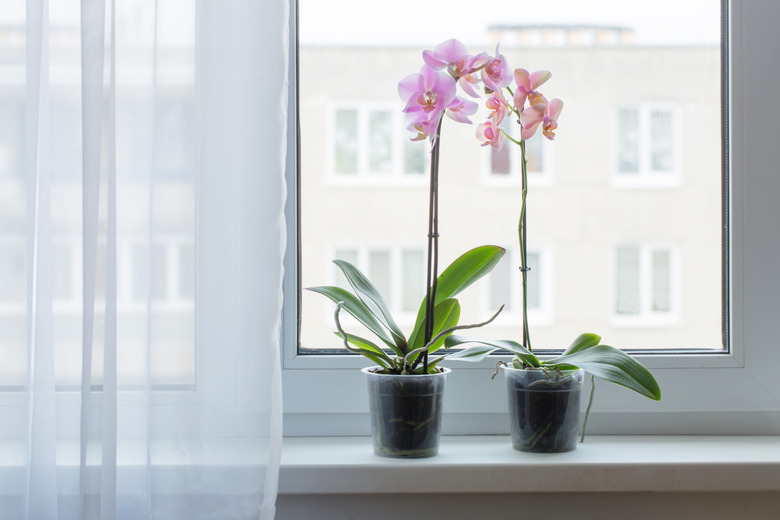What Is The Lifespan Of An Orchid?
From the first bud to the brilliantly colored petals, the delicate blooms of an orchid are a thrill to watch unfold. Orchid blooms are distinct and beautiful, but unless conditions are exactly right, they may be short-lived. The Orchidaceae plant family contains more than 25,000 different species. While orchids grow all over the world, they are most common in warm tropical and subtropical regions. Extend the lifespan of orchid plants and blossoms by giving orchids proper care and paying close attention to their needs.
Tip
An orchid plant's lifespan depends on a number of factors, including the type of orchid, its environment and the quality and consistency of the care it receives.
Types of Orchids
Generally, orchid flowers may be separated into two different growth types. In nature, epiphytic orchids grow on tree branches, not on soil. Epiphytic orchids may appear to be parasitic, but they cause no harm to the trees that they have attached to and grow on. The plants feed on decomposing plant matter that sticks to their probing roots. Dendrobium and cattleya orchids are both epiphytic.
Terrestrial orchids grow on the ground, and are hardier than warmth-loving epiphytic orchids. There are more than 200 species of terrestrial orchids. Some require a completely frost-free and relatively warm environment while others are capable of growing and blooming in colder climates. These hardy orchids are deciduous and lose their leaves in winter to produce tender leaves in spring.
The pseudobulbs at the base of some terrestrial orchid store water. These types of orchids need the soil to be relatively dry before you water them again so that they don't get too much moisture. Terrestrial orchids with shallow roots need the soil to be moist but not soaking and require more water when in bloom.
Cultivation of Orchids
Orchids are air-loving plants, and most cannot be planted on soil alone. For soil that's airy and well-draining, add light potting media such as bark chips and peat. Gardeners may exercise more control over container-grown orchids; they are easier to cultivate and care for than stationary garden plants. Orchids are sensitive to light.
Too much light will not prevent flowering, but it will bleach and discolor the foliage — while a small amount of light will keep the plant from producing blossoms. Fertilize orchids regularly to provide the nutrients. Use a fertilizer that's specially blended for orchids, following all label directions for rate and frequency of applications. With good care and regular maintenance, an orchid plant may live for many years.
How Long Blossoms Last
Cut orchids live for about three weeks if you care for them well. Change the water in the vase every two days and recut 1/8 inch off the end of the stem every time you do so. Keep the flowers out of direct sunlight, which may scorch the blossoms and leaves if it's too strong. Blossoms on potted or planted orchids can last for 30 to 45 days and, with proper care, can bloom twice in a year.
Lifespan of an Orchid
Orchid plants do not have a finite life span, but after 15 to 20 years, the plants will naturally become weaker, producing fewer blossoms. Plants have a natural immune system, and over time it becomes worn down by natural bacteria and fungi. Repot orchids regularly, once every two or three years, to prevent disease. As aging orchids become more problematic and more prone to disease, you may want to consider replacing the plant.
